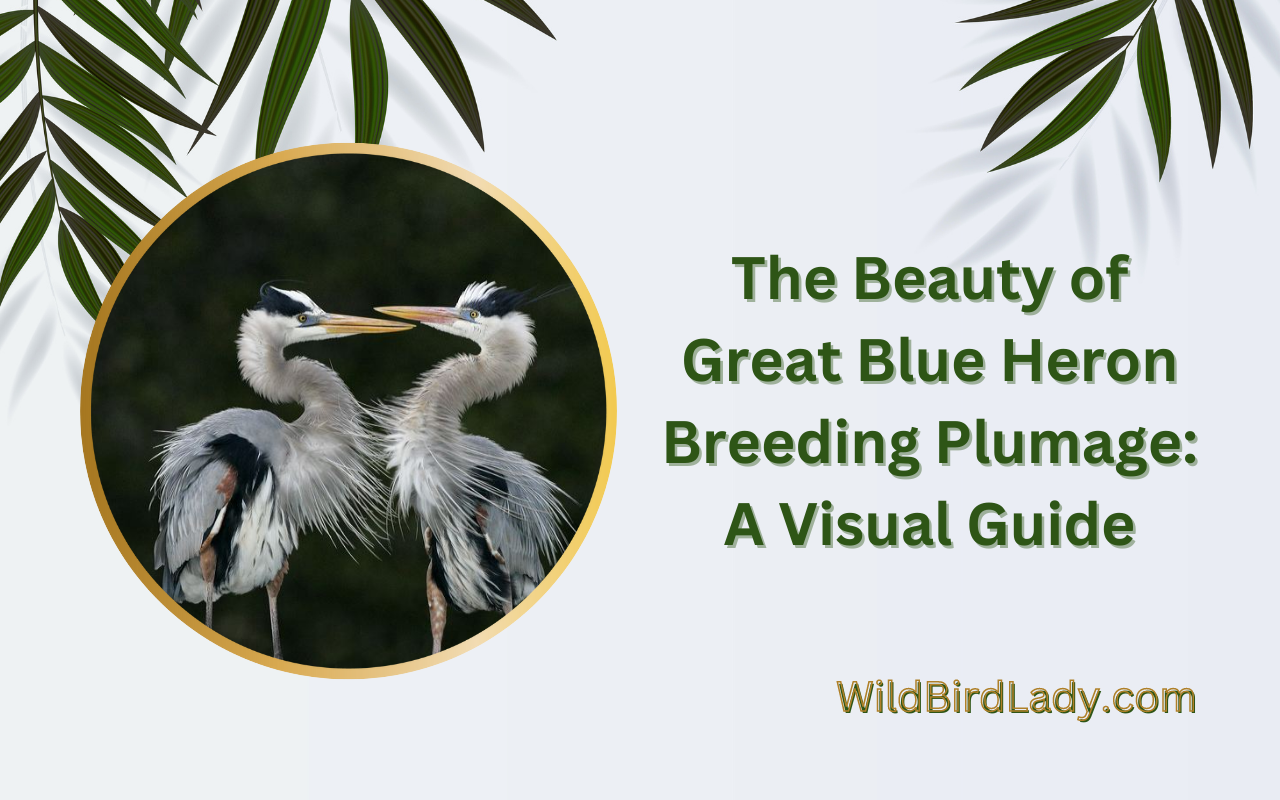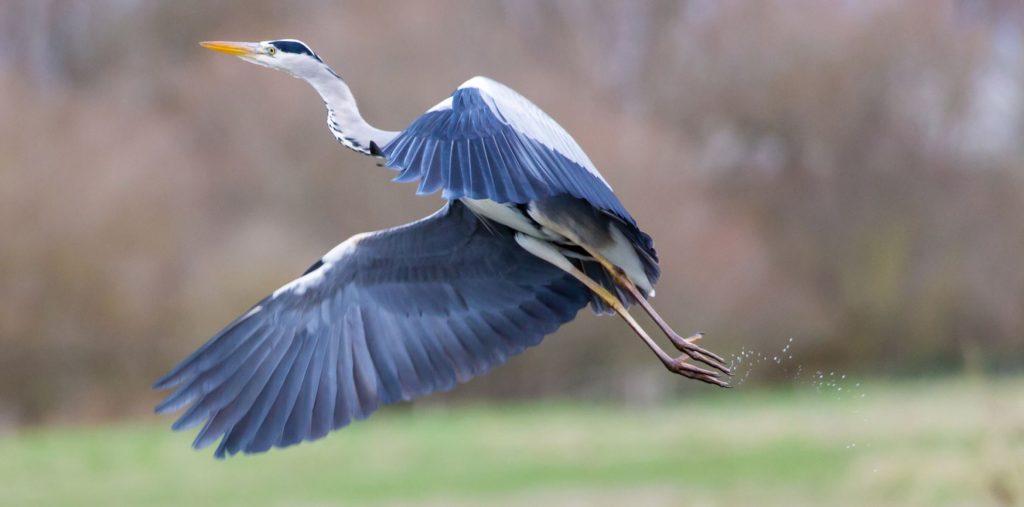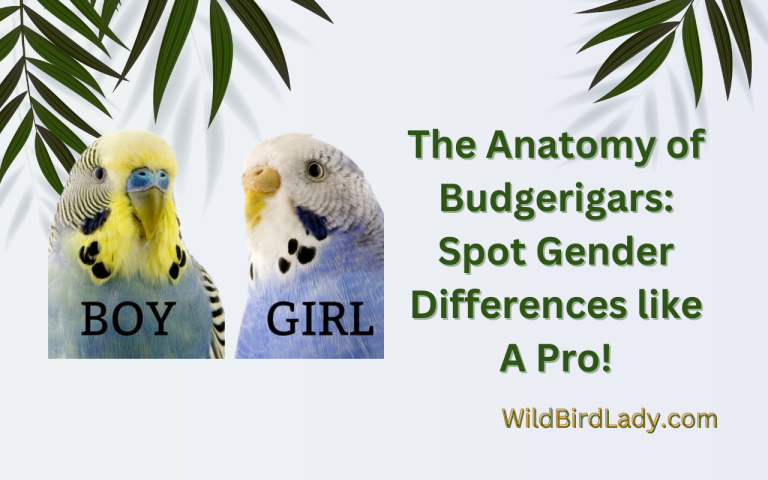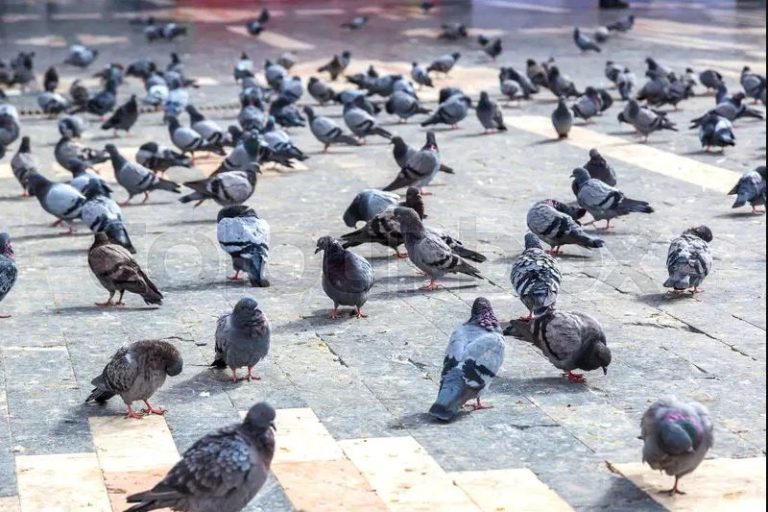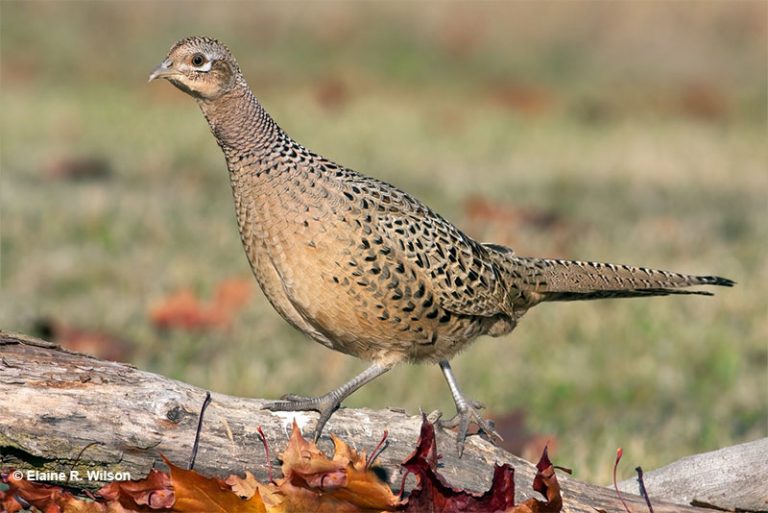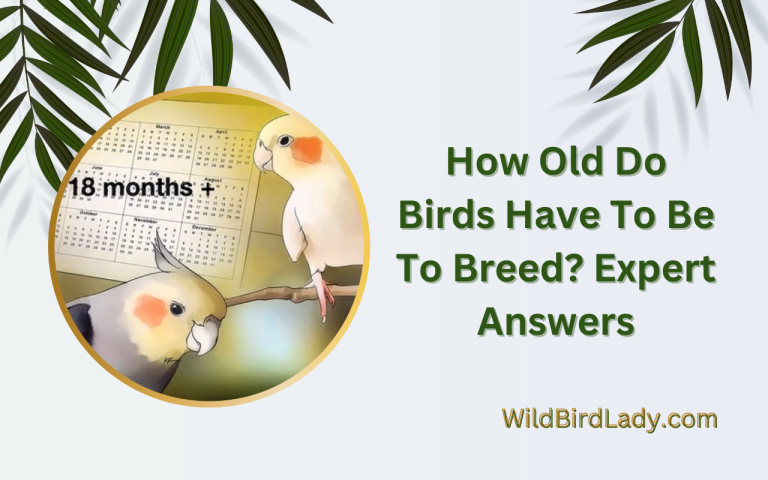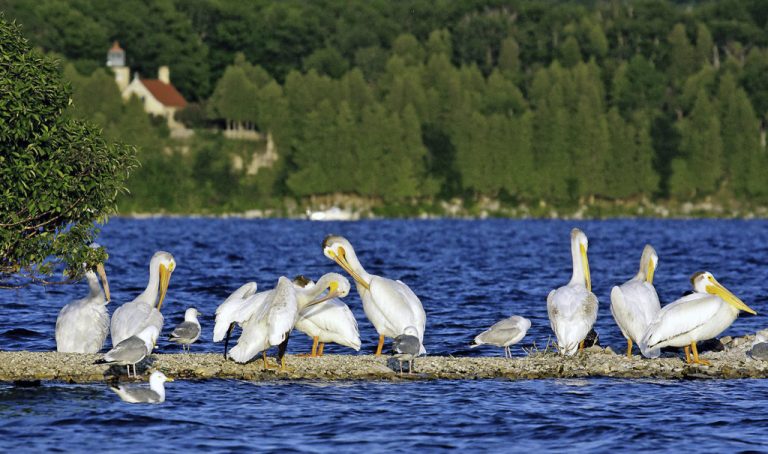The Beauty of Great Blue Heron Breeding Plumage: A Visual Guide
The great blue heron’s breeding plumage is visually stunning, featuring long blue-gray feathers and delicate plumes. This article provides a comprehensive guide to this impressive display.
The great blue heron is a recognizable bird found throughout north and central america, and its breeding plumage is an amazing sight to behold. The feathers on its head and neck lengthen, and its plumes become more delicate. Its legs also turn a brighter shade of orange, adding to its striking appearance.
In this article, we will provide a visual guide to the heron’s breeding plumage, including its distinctive features and how to spot it in the wild. Additionally, we will explore the role of plumage in courtship and breeding, giving you a fuller understanding of this magnificent bird.
Characteristics Of Great Blue Herons
The great blue heron is a majestic bird that stands out in any natural habitat. Known for their distinctive blue-gray feathers and long necks, these incredible birds are easily recognizable. However, there is more to these birds than just their striking appearance.
In this visual guide, we will explore the characteristics, habitat, and behavior of great blue herons. Let’s dive in!
Physical Characteristics Of Great Blue Herons
- Adult great blue herons stand at around 4 feet tall and have a wingspan of up to 6 feet.
- They have blue-gray feathers on their back, wings, and tail, with a white head and neck, and a black stripe above their eyes.
- Great blue herons have long, pointed bills that are adapted for catching fish and other small prey.
- Their legs are long and thin, with long toes that are perfect for wading through water.
- During breeding season, their long feathers grow even longer and their bills become brighter in color.
Overview Of Their Habitat And Behavior
- Great blue herons can be found in wetland areas such as swamps, marshes, and the edges of ponds and lakes.
- They are solitary birds and spend most of their time alone, though they may gather in groups during breeding season.
- Great blue herons are carnivorous and feed mainly on fish, but also eat amphibians, reptiles, and small mammals.
- During breeding season, the male will bring sticks and twigs to the female who builds the nest using the materials.
- Great blue herons mate for life and may return to the same nesting site year after year.
The great blue heron is a fascinating creature with unique physical characteristics and interesting behavior. Their beauty and grace make them a popular subject for photographers and nature lovers alike. Next time you spot a great blue heron in the wild, take a moment to appreciate the wonder of nature that is right in front of you.
The Importance Of Breeding Plumage
The great blue heron is a bird that is known for its grandeur and grace. But it’s during the breeding season that this bird truly glows in all its glory. The beautifully colored plumage is a joy to behold. Let’s explore the importance of great blue heron breeding plumage in greater depth.
Explanation Of What Breeding Plumage Is
Breeding plumage is the brilliant colors that birds put on during the breeding season. These colors are used to attract mates and to show off to potential rivals. The great blue heron is no exception and their breeding plumage is a sight to behold.
The Significance Of Breeding Plumage For Great Blue Herons
The great blue heron is a solitary bird that can often be seen standing perfectly still, waiting for a fish to swim by. However, during the breeding season, they become more active and vocal. They put on quite the show of synchronized movements like stretching, wing flapping, and preening, all to display their beautiful and vibrant breeding plumage.
This is a crucial time for the male great blue heron as they compete with other males for the attention of the female.
Comparison Of Breeding Plumage To Non-Breeding Plumage
The difference between breeding and non-breeding plumage in great blue herons is quite striking. During the non-breeding season, the colors are much more muted and subdued. The grayish-blue feathers on their back and wings turn into a gorgeous bluish-purple color, and they grow long and feathery plumes on their heads, backs, and breasts, adding an extra level of elegance to their already majestic appearance.
This unique plumage makes the great blue heron stand out and is essential for their courtship rituals.
The great blue heron breeding plumage is a crucial component of these birds’ survival. It helps attract potential mates and ward off competitors. Their display of feathers during the breeding season is breathtaking and a testament to the beauty of the natural world.
Examining Great Blue Heron Breeding Plumage
The great blue heron is one of the most majestic birds of north america, and its breeding plumage is a sight to behold. The beautiful colors and patterns of their breeding plumage serve as an important visual cue for attracting potential mates during the breeding season.
Let’s take a closer look at the features of great blue heron breeding plumage.
Overview Of The Features Of Their Breeding Plumage
- Great blue herons are medium to large-sized birds known for their long legs, necks, and sharp bills, but during the breeding season, their physical appearance changes significantly.
- The most noticeable feature of great blue heron breeding plumage is their long, lacy feathers that grow from their back and neck.
- These feathers are known as plumes, and they are typically buff-colored, but during the breeding season, they become a deep blue-gray.
- In addition to their plumes, their lores, a small patch of skin between the eyes and bill, turn blue, and their legs and feet become a bright shade of yellow.
Detailed Analysis Of The Colors And Patterns
- The great blue heron’s dark body feathers become a lighter, grayish-blue color during the breeding season.
- Their plumes, which they carefully arrange and display in an impressive courtship ritual, are a gorgeous blue-gray color with black tips.
- The blue color of their lores appears iridescent under bright light, which draws even more attention to their strikingly colored feathers.
- Looking closely at their plumage, you’ll see thin, black stripes that run along the length of each feather, adding to the great blue heron’s visually stunning breeding plumage.
Explanation Of How Breeding Plumage Differs Between Males And Females
- Both male and female great blue herons develop breeding plumage during the breeding season, but the feather colors and pattern differ between the sexes.
- Males typically grow longer and fuller plumes than females, indicating their strength and vigor to attract a mate.
- Additionally, males have brighter blue lores than females.
- In contrast, female breeding plumage tends to be less vibrant than males, serving as a way to blend in and protect themselves while sitting on their nests to brood their eggs and protect their young.
Overall, great blue heron breeding plumage is an exquisite sight to behold. Their beautiful feathers, colors, and patterns are an essential part of the mating ritual and serve as a clear visual cue during the breeding season.
Conservation And Protection
Overview Of The Endangerment Of Great Blue Heron Populations
It’s no secret that great blue heron populations are declining worldwide. Habitat destruction, hunting, pollution, and climate change are all contributing factors to this. These magnificent birds, with their distinctive blue-gray plumage and long, slender necks, are essential to the health of our ecosystems.
Losing them would be a tragedy. Here are a few key points to keep in mind regarding their endangerment:
- Great blue herons are known to be sensitive to human disturbances in their breeding and nesting habitats.
- A study conducted by the audubon society showed that the great blue heron is among the highest at-risk species in north america due to the rapid loss of wetlands.
Explanation Of What Is Being Done To Protect Them
Fortunately, there is hope for the preservation and protection of great blue herons. Here are some of the measures being taken to ensure their survival:
- Government organizations, such as the national fish and wildlife foundation, have implemented funding programs to aid in the recovery and protection of great blue herons.
- Private entities have also taken measures to protect great blue herons by preserving habitats, conducting research, and promoting conservation.
- Non-profit organizations, such as the audubon society and the nature conservancy, have developed community education programs to raise awareness about the importance of these birds and to encourage conservation efforts.
The Impact Of Breeding Plumage On Conservation Efforts
Great blue herons’ breeding plumage has a direct impact on conservation efforts. Here’s how:
- Great blue herons’ breeding plumage is a striking visual that can inspire people to care more about conservation efforts.
- The impressive plumes of breeding males were once used for decoration by the fashion industry, leading to their decline. However, with the establishment of laws and regulations, hunting and killing of great blue herons for their breeding plumage is now illegal.
- Monitoring and tracking breeding plumage can provide valuable information for conservationists regarding the population size, migratory patterns, and breeding success of great blue herons. This information can guide conservation efforts to better protect these birds.
Great blue herons are an integral part of our natural world and their protection is crucial to the health of our ecosystems. Their population decline is a cause for concern, but conservation and protection efforts are making a difference. With continued awareness and support, we can ensure the preservation of these magnificent birds for generations to come.
Frequently Asked Questions Of The Beauty Of Great Blue Heron Breeding Plumage: A Visual Guide
What Is The Great Blue Heron Breeding Plumage?
Great blue heron breeding plumage involves blue-gray feathers on their head, shoulders, and back, along with long, flowing feather plumes, known as aigrettes, on their chest and back.
When Do Great Blue Herons Develop Breeding Plumage?
Great blue herons develop breeding plumage around the time they begin to breed, which is typically in late winter or early spring.
What Is The Purpose Of The Great Blue Heron’S Breeding Plumage?
The great blue heron’s breeding plumage serves as a visual cue to attract potential mates during the breeding season. The distinctive blue-gray feathers and long aigrettes signal strength and fitness.
How Do Great Blue Herons Care For Their Young During Breeding Season?
After laying 1-7 eggs, both male and female great blue herons take turns incubating the eggs before their young hatch. The parents then must provide food for the chicks, which involves fishing and regurgitation of partially digested food.
How Long Do Great Blue Herons Keep Their Breeding Plumage?
Great blue herons typically keep their breeding plumage for a few months during the breeding season before the feathers molt and return to their non-breeding appearance, which is more uniform in color.
Conclusion
The breeding plumage of the great blue heron is a beauty that never fades. As this visual guide has shown, the colors and patterns of the feathers are an impressive sight to behold. Beyond its aesthetic value, this plumage also serves an important purpose.
It is a part of the breeding process for this magnificent bird, communicating health and readiness to potential mates. As such, the great blue heron’s breeding plumage plays a crucial role in ensuring the continuation of their species. With its grace and elegance, this bird is truly a wonder of nature.
As we marvel at the sight of this stunning plumage, we are reminded of the importance of preserving and protecting the natural world around us. By working to ensure the continued survival of the great blue heron, we can help to ensure that future generations are able to witness its beauty for themselves.

